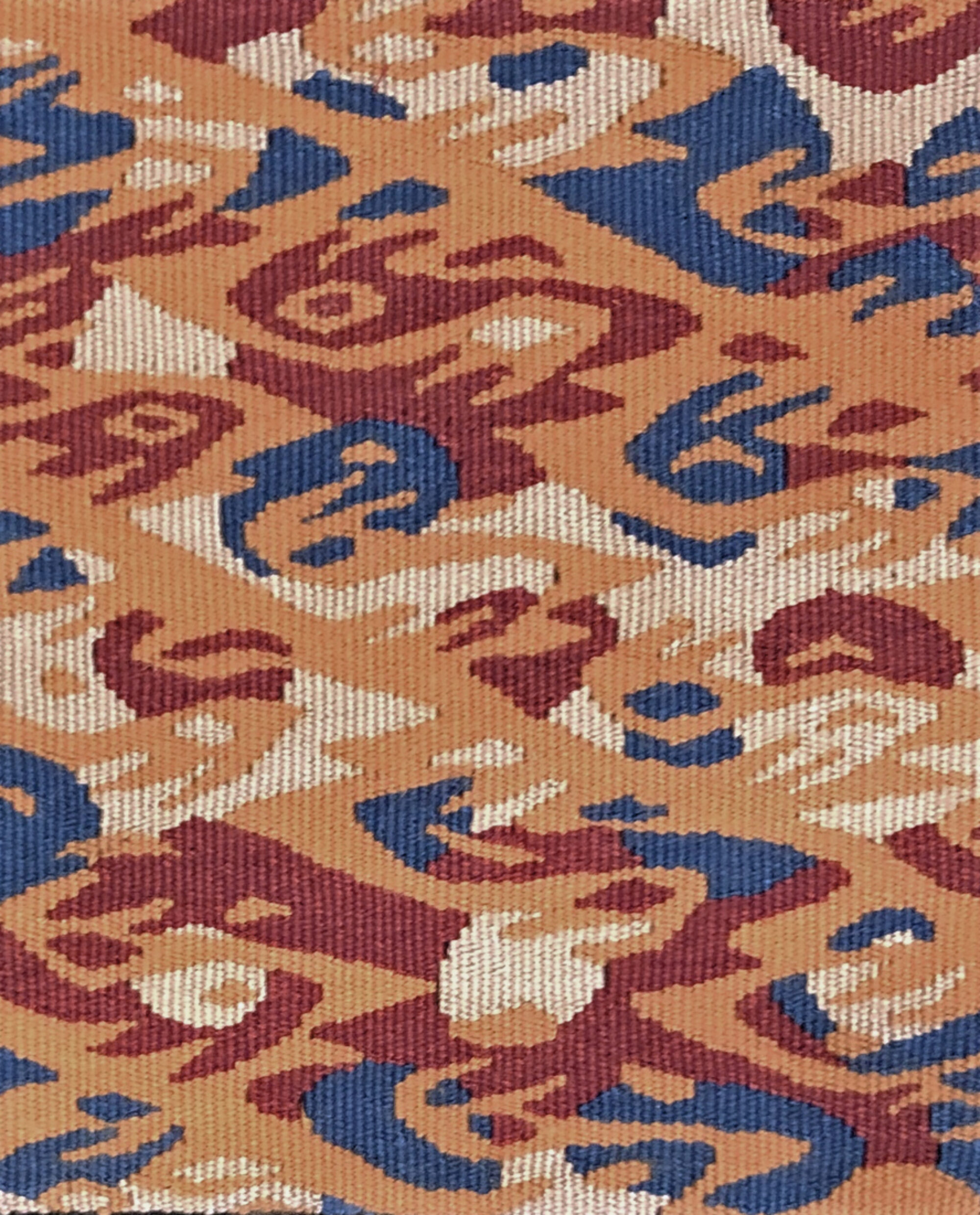This article was first published in the International Tapestry Journal, Vol.5, No. 4, Winter 1994-95.
Fragments of Memory
Carolyn Price Dyer Gallery, Tacoma, WA, 1994
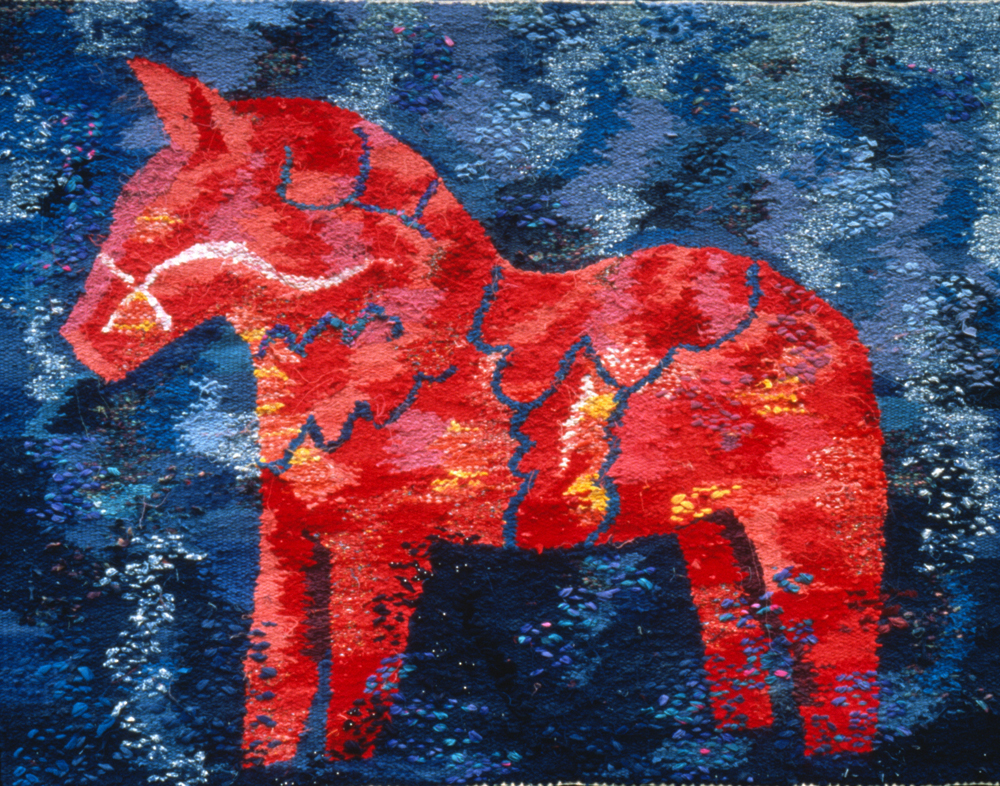
The Carolyn Price Dyer Gallery opened its exhibition schedule this fall with a retrospective of the Swedish born and educated tapestry artist, Cecilia Blomberg. Spanning a period of ten years, the show documents the development of an artist’s career and, as such, is a viewing opportunity too rarely afforded tapestry enthusiasts. Included in the show are nineteen tapestries, some with their maquettes, as well as photo documentation of two public commissions that Blomberg executed in the mid-1980s.
Many of the images contained within these tapestries arose from personal memories and experiences. They are diaristic, exhibiting a desire to create a conversation with the past and to provide that past with a tangible form. The visual manifestation, however, transcends the limits of historical documentation; four, as an artist, the author of the work is invested, some may say blessed, with the ability to create – to alter, embellish, adorn – and to mold the viewer’s perception through an interpretive and selective approach to reality. It is this sense of reworking a memory or an event, of molding and framing, that is apparent in Blomberg‘s work. Her use of layered images and dissolving edges suggests a richness, a depth, and, at the same time, a subjectivity that reflects the personal experience of the artist.
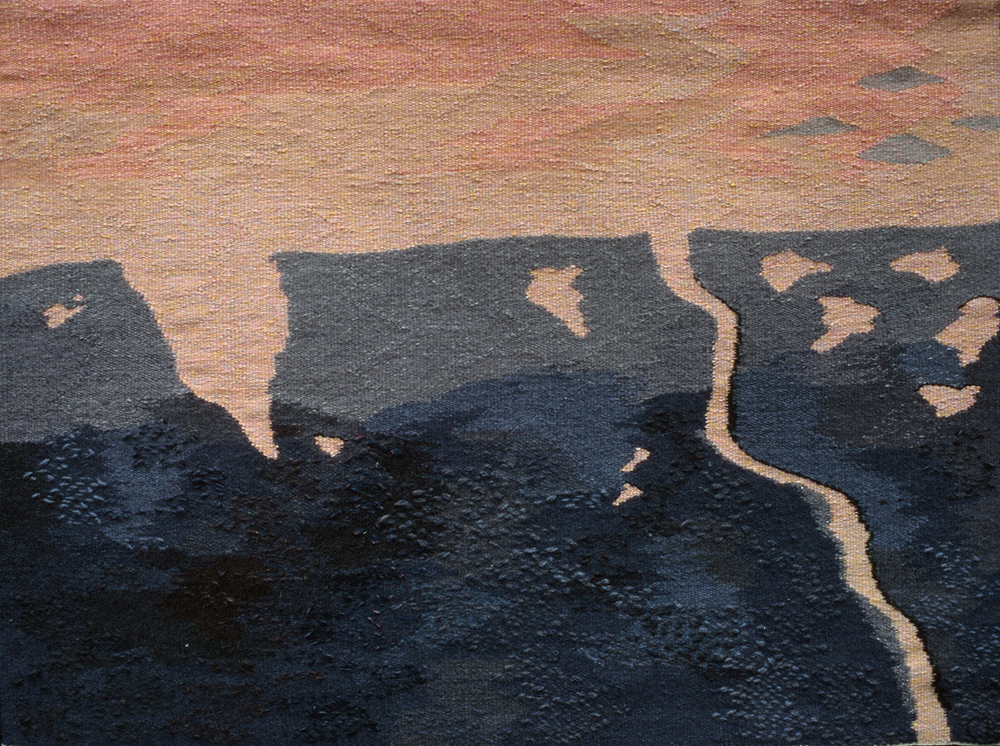
Portraying the past is always, to some extent, dependent upon communication, be a verbal, written, or in this case, visual. And, of course, as “text” (Latin textere, meeting to construct) is part of “textile” (a construct), it seems self-evident that textiles should be used to record the past. The tradition of historical narrative in tapestry is one that is firmly established. The stories of the past from the hands of Blomberg are not to be read as easily as, for instance, the historical and allegorical narratives of the 15th century. Rather, there is a sense of ambiguity and even mystery in the repeated fragmentation and dissolution of the images, and enigmatic quality that makes us suspect a certain amount of ambivalence, of longing, and wistful melancholy in Blomberg’s attitude toward her past. In Swedish Coast from 10 km, the nostalgia of homecoming, the joy and sadness, are elegantly suggested through the abstract representation of her homeland; the simple outline of coast and land belies the emotional richness of the memories.
Fragmentation is tied to the very nature of tapestry weaving itself, which involves the building of one shape after another. To remind us of this, Blomberg has hung (with pushpins) three small, unfinished Fragments – weft and warp left hanging and unfinished. Fragmentation surfaces again in her use of fabric strips (many of the tapestries are woven from the same material as rag rugs). These ripped remnants of cloth were themselves once part of someone’s life and therefore entwine their own history into the complex fabric affect Blomberg’s woman memories.
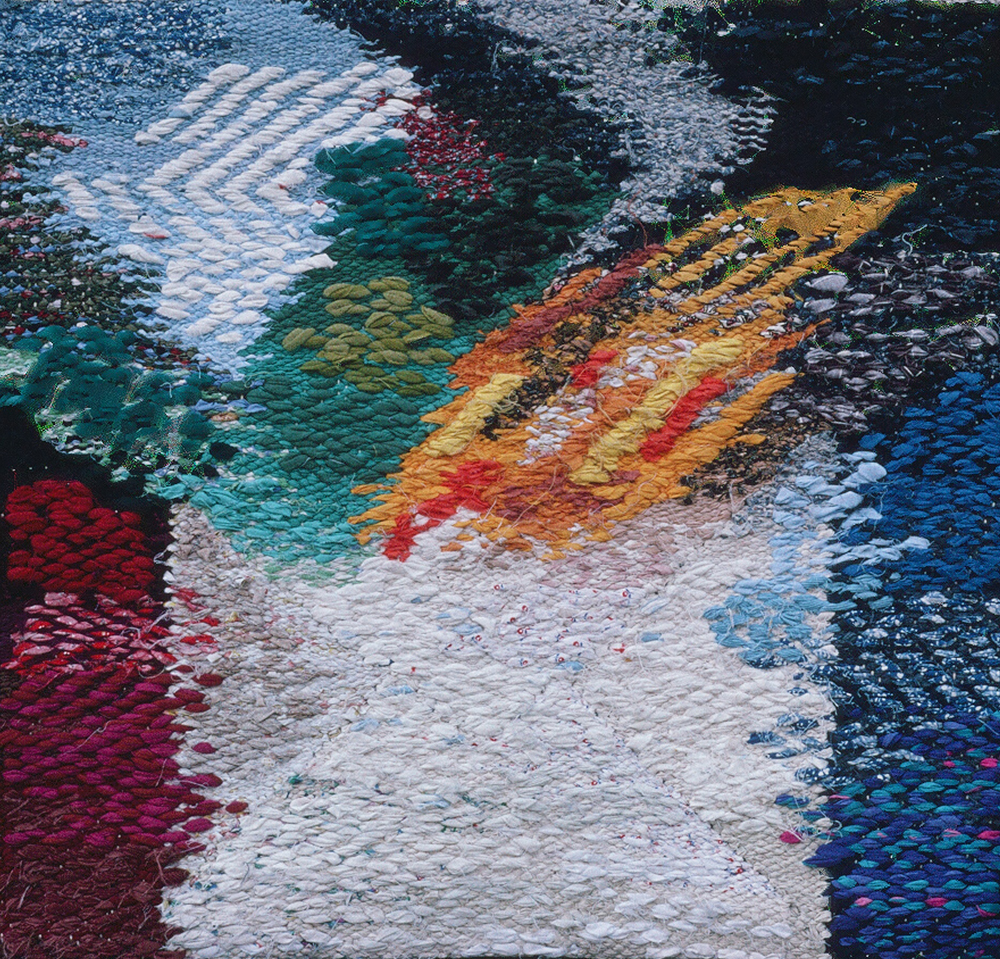
Blomberg‘s impulsive and spontaneous use of surface texture further enriches her images and often seems to carry on a life of its own. In Letter I, which represents stories from Sweden receive by Blomberg through the mail, the barely discernible form of a white paper envelope is eaten into by the much more powerful reds and blues that surround it. Laying over and exploding out of the envelope are the stories (both good and bad, she tells us) which are presented as highly energized and emotional abstractions a form and line.
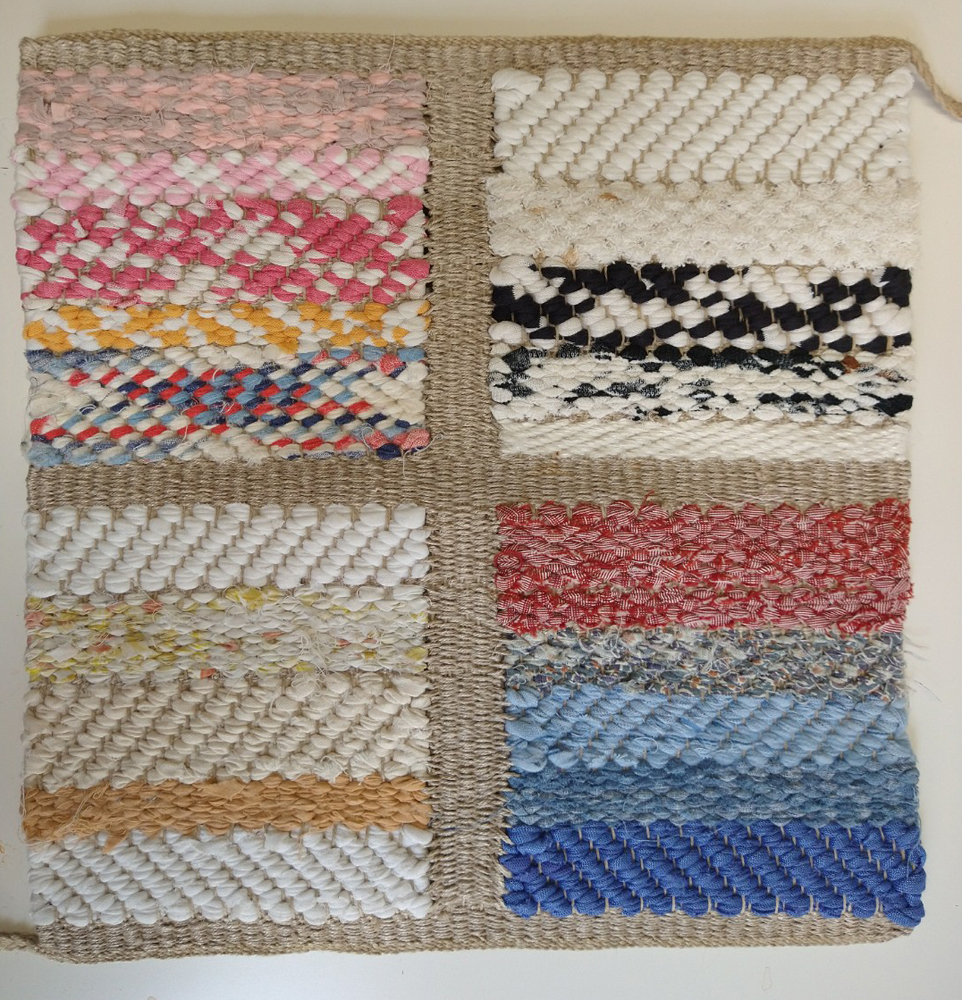
Our reading of the images is further complicated by the use of a set of enigmatic symbols: arrows, triangles, zigzags, and squares. These elements refer to language as a symbolic construct and also to the decorative nature of textiles, the latter quality having been assiduously avoided by tapestry artists in their pursuit of high art status. This self-referential aspect of Blomberg’s work is apparent in various pieces, including Linen Cupboard, in which a rectangle (the cupboard) is divided into four patterned squares (the stacked linens) – the rendering of a textile by a textile.
The square reappears frequently as an isolated motif and as the shape of the tapestries themselves. Through its static and fixed nature it binds the pieces of memory and the fragments of cloth, counterbalancing the insistent and ever present impulsive play of line and form that animate the images. This use of the square comes to a wonderfully composed climax in Home I and Home II, in which a square (window) within a square (home) within a square (tapestry) provides a quintessentially simple format for an emotional dialogue between day and night, order and chaos. In an unconventional twist, day is coupled with chaos and night is connected to order, thus turning our expectations on their heads.

The opposition of order and chaos surfaces again in River Rug. The image is a checkerboard (Is this game?) broken by two meandering rivers which, energized by a flowing alternation of color, cut through the persistent geometry of the squares – a relationship which Blomberg describes as “orderliness broken by chaos”. Again in this work, the inherent nature of order is questioned by the erratic and energetic ornamentation of the squares with the now recognizable vocabulary of symbols, as well as by a subtle, yet all-pervasive, zigzag lazy line that consistently breaks apart the geometric identity of the squares.
The tension between iconic shape and spontaneous mark making achieves a finally tuned balance in Through Darlecarlia without a Rider. This large tapestry depicts a red horse – a colossal version of a wooden handmade toy that has become a symbol of Sweden and its handicrafts. Originally, Blomberg and envisioned this as a dark statement reflecting the difficult times that her homeland has been experiencing; yet the innate joyfulness and exuberance of the horse, and perhaps the artist, prevailed. Except for its scale, this horse might fit into the symbolic vocabulary of form that dances through many of the other images present in the exhibition. The solid and formal presentation of the horse enters into a playful exchange with the background, whose lively transitions of color and form spill over into the static presence at the horse, vying for the viewer’s attention and yet never totally capturing it.
The presence of the artist re-experiencing her memories was deeply felt throughout the exhibition. It is this sense of remembrance, along with a strong stylistic vocabulary, that unites the tapestries and offers the viewer a visually rich and personally compelling experience.
